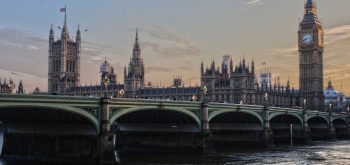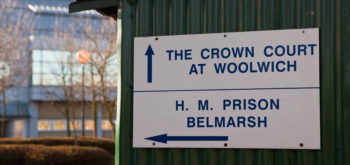So our courts are not like the Jeremy Kyle show after all? We think we sort of know how the courts work in the UK. We watch Coronation Street, remember how unfair it all can be from the case of Jarndyce v Jarndyce in Bleak House and how Heathcliff finally got his hands on Wuthering Heights (or we watched the serialisations on TV) and enjoy the drama of an angry judge silencing the court with his wooden gavel. Only it is all tosh – or ‘dramatic licence’ if you prefer.
Most members of the public do not have a very clear idea at all of what is going on it their name and at their expense. What we read or watch, even if well intentional, does not show a realistic portrait of British justice.
It took some 20 years of debate to persuade MPs to allow cameras into parliament, yet when Prime Minister’s Question Time was broadcast it swiftly became compulsive, and highbrow, entertainment. But more importantly it gave the public access to the process and an awareness of what the politicians actually did.
And now, at last, cameras are being allowed into Courts – at least if Justice Secretary Ken Clarke’s plans make it beyond the Queen’s Speech and onto the Statute book. Last September it was announced that the ban on televising court proceedings was going to be removed to improve public understanding of the justice system. Ken Clarke said that cameras would initially be allowed in the Court of Appeal and later expanded to the Crown Court.
ITN, BBC and Sky News had all been lobbying for cameras in Court for a decade, led by ITN’s in-house counsel John Battle, and the objections of lawyers, judges and politicians faded only slowly (if at all). The BBC did a series on justice in Scotland (the absolute ban on cameras in court, from the 1920s, applied only to England and Wales) but this involved a host of necessary permissions from the participants and appeals to be over so the reporting was anything but contemporaneous. But last week the cameras showed Edinburgh Judge Lord Bracadale jail murderer David Gilroy for life. Gilroy killed his former lover Suzanne Pilley whose body has still to be found. All you saw was the dignified visage of the judge passing sentence (not the trial or even the plea in mitigation and certainly not the impact of a minimum of 18 years on the face of the defendant) but this was landmark television.
Now that the cameras are finally through the door they are unlikely to depart and we should perhaps remember that they are already in the courtroom not only in the United States but, for example, in Italy (the proceedings concerning the murder of Meredith Kercher on 1 November 2007 were compelling) and in Norway now with the trial of mass murder Anders Breivik. These were vile deranged murders but (at least in the UK) the television coverage has not been sensationalised but fair and accurate, and especially so when contemporaneous.
And of course the Supreme Court has been televised so since 2009 although it might have to be conceded that the proceedings there, although very erudite, seldom make for engrossing television as it is all legal arguments and no witnesses or surprises.
But perhaps the greatest irony of all is that the public’s expectation of contemporaneous and complete coverage of important trials has been given an immeasurable boost by the dramatic coverage of the Leveson Inquiry. So it is the media shenanigans being exposed in Court (OK, with a smattering of celebrities to pull in the punters) that have whetted the public’s appetite for seeing the legal process as it really is, live and no longer always through the filter of a Court artist and reporter.
But things had already started to move at enormous speed as soon as the courts bravely (in the eyes of some) but successfully embraced the use by journalists of Twitter during trials with the result that the public (if interested) can have a near contemporaneous shortened transcript of the cases that they are interested in.
Just as, perhaps to their surprise, politicians have benefited from having cameras in their working lives so it seems that lawyers are beginning to learn that the effectiveness justice, and their own reputations, can be enhanced by the public actually seeing what goes on and realising that whilst exciting (sometimes) it is also a vital part of the public having trust in its justice system. Perhaps there will even come a time when television dramatists no longer need to pretend that judges use gavels.





